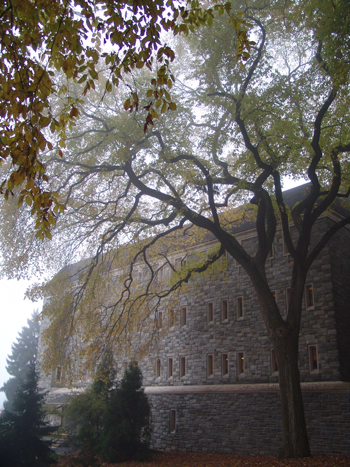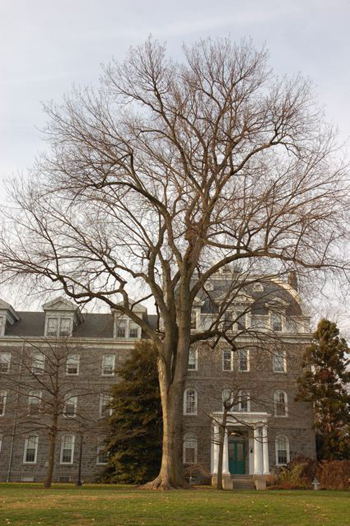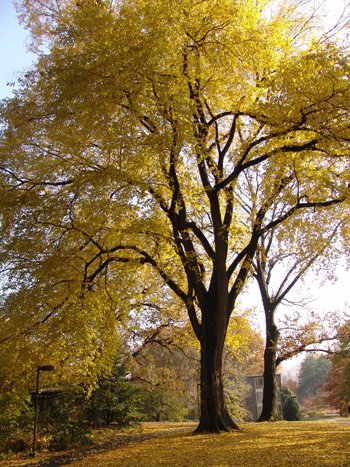
While the Arboretum was founded over 80 years many of the most fantastic tree specimens at the Arboretum were planted by the early founders of Swarthmore College. On the campus there are nine remaining specimens of the American elm, Ulmus americana which pre-date the Arboretum (founded in 1929). Many of these were class trees in the late 1800’s. One of the finest of these elms resides just outside of the Terry Shane Teaching Garden behind McCabe Library. This elm is the class tree of 1875.

Ulmus americana of the orginal planting in front of Parrish Hall. photo credit: T. Zetterstrom
On December 14th Tom Zetterstrom, a nationally recognized photographer of trees, visited with Julie Jenney and me. In addition to his photographic work, Tom has been documenting outstanding specimens of American elms, especially in the Northeast. Tom commented that the class tree of 1875 is as big or possibly even bigger than any elm in Massachusetts.
The American elm has been devastated by Dutch Elm Disease. It was one of the predominant shade trees that lined the streets in residential neighborhoods throughout the Northwest. In areas where American elms were planted as monocultures the effects of this disease was catastrophic.

American elm in fall color. photo credit: R. Maurer
At Swarthmore College, elms were planted in profusion years ago. At the front of Parrish Hall there was a row of specimen American elms that almost all succumbed to Dutch Elm Disease. Of that planting one plant remains at the east end of Parrish in the front. Other fantastic specimens at the Arboretum include one behind McCabe Library; Ashton House; two along the train tracks in the Pinetum, at the west end of Parrish Hall, and a beautiful weeping specimen near the softball fields along Field House Lane.
Today, the specimens at the Arboretum are treated every other year with Arbortect which is a fungicide that is injected through several tiny holes at the base of the tree through the bark.
